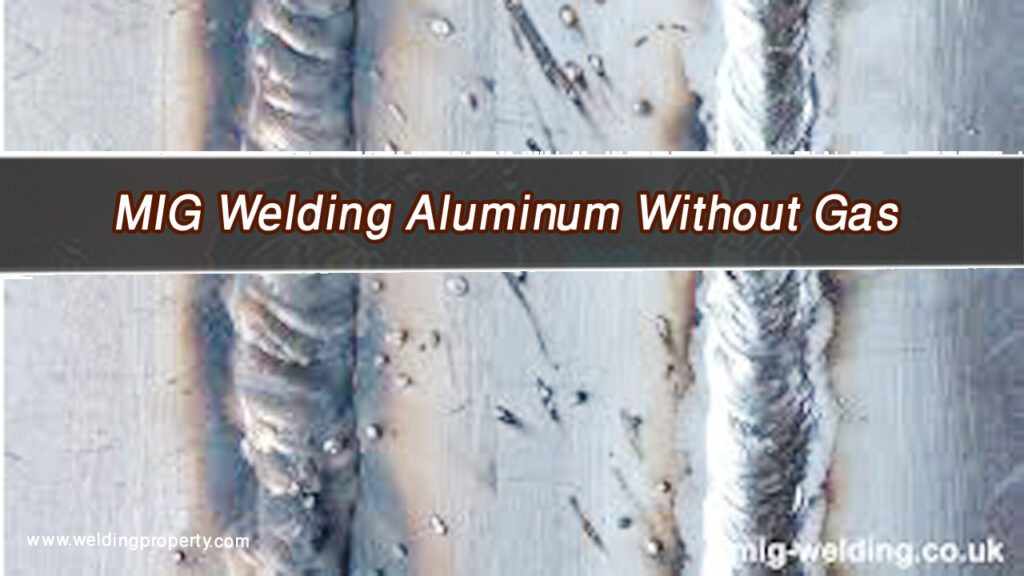When I first started learning to weld, the idea of welding pipes with a MIG (Metal Inert Gas) welder felt both exciting and challenging. MIG welding, also known as Gas Metal Arc Welding (GMAW), is one of the most versatile and user-friendly welding methods.
With the right technique, you can create clean, precise, and durable welds that work for a wide range of pipe applications.

Image by reddit.com/r/Welding
If you’re curious about how to weld pipes with MIG, you’re in the right place. In this guide, I’ll walk you through every step, from setting up your equipment to perfecting your technique. Whether you’re a beginner or looking to expand your welding skills, I’ve got you covered.
Why Choose MIG Welding for Pipes?
MIG welding is a popular choice for pipe welding because it’s efficient, clean, and versatile. Here’s why it stands out:
- Ease of Use: MIG welding is beginner-friendly, with minimal setup and a straightforward process.
- Speed: It allows for faster welding compared to other methods like stick welding.
- Precision: Produces smooth, clean welds with minimal spatter.
- Adaptability: Works well for different pipe materials, including steel, aluminum, and stainless steel.
Tools and Materials Needed
Before you start welding, it’s essential to have the right tools and materials:
Equipment
- MIG Welder: Choose one with adjustable settings for voltage and wire speed.
- Shielding Gas: Use a mixture of argon and carbon dioxide (75% argon, 25% CO2) for most applications.
- Welding Wire: Select the appropriate wire for your pipe material. ER70S-6 is commonly used for steel pipes.
- Regulator and Flowmeter: To control the gas flow rate.
Safety Gear
- Welding Helmet: An auto-darkening helmet provides excellent protection and convenience.
- Gloves and Jacket: Protect your hands and body from heat and sparks.
- Safety Glasses: For added eye protection.
- Steel-Toe Boots: Ensure your feet are safe from falling objects and hot materials.
Additional Tools
- Pipe Clamps or Stands: To hold the pipe in place during welding.
- Angle Grinder: For cleaning and preparing the pipe surfaces.
- Wire Brush: To remove debris and ensure a clean weld.
- Chipping Hammer: For cleaning slag if needed.
Preparing the Pipe for MIG Welding
Preparation is crucial for achieving strong and consistent welds. Follow these steps to get started:
Clean the Pipe
Dirt, grease, and rust can compromise the weld quality. Use an angle grinder or wire brush to clean the pipe surface thoroughly.
Fit and Align the Pipes
Proper alignment ensures even welds and prevents weak spots. Use clamps or stands to secure the pipes in place. Leave a small gap (1/16 to 1/8 inch) between the pipe ends to allow for proper weld penetration.
Bevel the Edges
For thicker pipes, bevel the edges to create a groove. This helps the weld penetrate deeply and creates a stronger joint.
Tack Weld the Joint
Apply tack welds at several points around the joint to hold the pipes together. This prevents movement during the welding process.
Setting Up Your MIG Welder
Properly setting up your MIG welder is the foundation of a successful weld. Here’s how to do it:
Select the Correct Wire and Gas
Match your wire and shielding gas to the pipe material. For example, use ER70S-6 wire and a 75/25 argon-CO2 mix for mild steel.
Adjust the Voltage and Wire Speed
These settings depend on the pipe’s thickness. Start with the manufacturer’s recommended settings and fine-tune as needed. Test on scrap metal before welding the pipe.
Set the Gas Flow Rate
A flow rate of 20-25 cubic feet per hour (CFH) is ideal for most pipe welding projects.
Check the Polarity
Ensure the welder is set to the correct polarity for MIG welding: DCEP (Direct Current Electrode Positive).
How to MIG Weld a Pipe
Now that everything is set up, it’s time to start welding. Here’s a step-by-step guide:
Start with the Root Pass
The root pass is the first weld that fuses the two pipes together. Maintain a steady hand and keep the wire at a 10-15 degree angle to the pipe surface. Move slowly and evenly to ensure proper penetration.
Clean and Inspect the Root Pass
After completing the root pass, use a wire brush to remove any debris. Inspect the weld for consistency and address any gaps or weak spots.
Apply Filler Passes
The filler passes build up the weld and add strength. Use a weaving motion to distribute the weld metal evenly across the joint. Ensure that each layer is clean and smooth before applying the next pass.
Cap the Weld
The cap pass is the final layer, covering the filler passes. It should be slightly convex and free of defects. Maintain a steady travel speed and consistent angle for a clean, professional finish.
Tips for Better MIG Pipe Welding
Practice Positional Welding
Pipe welding often involves welding in different positions—horizontal, vertical, or overhead. Practice these positions to improve your technique and confidence.
Watch the Weld Pool
Pay close attention to the molten pool as you weld. It helps you control penetration and avoid defects like porosity or undercutting.
Use the Right Travel Speed
Moving too quickly can result in a weak weld, while moving too slowly can cause excessive buildup. Find a balance by practicing on scrap metal.
Maintain Proper Gas Coverage
Shielding gas protects the weld from contamination. Ensure consistent coverage by keeping your gas flow rate steady and welding in a wind-free environment.
Take Breaks
Welding can be physically demanding. Take short breaks to rest and regain focus, especially during long projects.
Challenges and Solutions
Porosity
Porosity occurs when air contaminates the weld pool. To avoid this, clean the pipe thoroughly and ensure proper gas flow.
Inconsistent Weld Beads
Uneven beads can result from poor technique or incorrect settings. Practice maintaining a steady hand and adjust your welder’s voltage and wire speed as needed.
Burn-Through
Burn-through happens when the weld is too hot, melting through the pipe. Reduce the voltage or increase your travel speed to prevent this.
Advantages of MIG Welding Pipes
- Efficiency: Faster than most other welding methods.
- Clean Welds: Produces minimal spatter and requires less cleanup.
- Versatility: Suitable for various pipe materials and thicknesses.
- Ease of Learning: Ideal for beginners and experienced welders alike.
My Personal Experience with MIG Welding Pipes
I’ve always found MIG welding to be one of the most satisfying techniques for pipe projects. One memorable experience was building a custom handrail for a friend’s patio. The clean, precise welds not only looked great but also stood up to heavy use.
The key to success was taking my time with preparation and setup. By ensuring the pipes were properly aligned and practicing my technique on scrap pieces, I was able to create a strong, professional-looking finished product.
Conclusion
Welding pipes with MIG is a valuable skill that combines efficiency, precision, and versatility. With the right preparation, equipment, and practice, you can create durable, clean welds that meet professional standards.
Take your time to master the basics, from cleaning and aligning the pipes to adjusting your welder’s settings. Remember, every project is an opportunity to learn and improve your skills. With dedication and practice, you’ll become a confident MIG pipe welder in no time.
FAQs
What is the best shielding gas for MIG pipe welding?
A mix of 75% argon and 25% CO2 is commonly used for most pipe welding applications.
Can beginners MIG weld pipes?
Yes, MIG welding is beginner-friendly and a great way to start welding pipes.
How do I prevent porosity in my welds?
Clean the pipe thoroughly and ensure proper shielding gas coverage to avoid porosity.
What wire size should I use for MIG pipe welding?
The wire size depends on the pipe thickness. For most applications, 0.035-inch wire works well.
Is MIG welding suitable for outdoor pipe welding?
MIG welding is best for indoor or sheltered environments. For outdoor welding, consider flux-cored wire or additional wind protection.

Endow Russel the owner chief editor of giftendow.com . I am a mechanical engineer and assign to an local firm with much experience in welding and industrial equipment.

